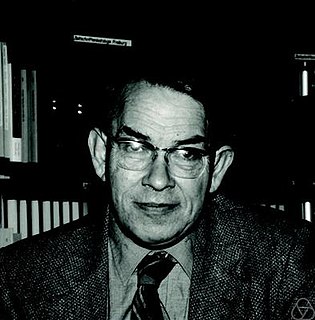Gábor Szegő was a Hungarian-American mathematician. He was one of the foremost mathematical analysts of his generation and made fundamental contributions to the theory of orthogonal polynomials and Toeplitz matrices building on the work of his contemporary Otto Toeplitz.

Lars Valerian Ahlfors was a Finnish mathematician, remembered for his work in the field of Riemann surfaces and his text on complex analysis.
In the mathematical field of complex analysis, Nevanlinna theory is part of the theory of meromorphic functions. It was devised in 1925, by Rolf Nevanlinna. Hermann Weyl has called it "one of the few great mathematical events of century." The theory describes the asymptotic distribution of solutions of the equation f(z) = a, as a varies. A fundamental tool is the Nevanlinna characteristic T(r, f) which measures the rate of growth of a meromorphic function.

Nathan Jacobson was an American mathematician.

Irving Kaplansky was a mathematician, college professor, author, and musician.
Bernt Karsten Øksendal is a Norwegian mathematician. He completed his undergraduate studies at the University of Oslo, working under Otte Hustad. He obtained his PhD from University of California, Los Angeles in 1971; his thesis was titled Peak Sets and Interpolation Sets for Some Algebras of Analytic Functions and was supervised by Theodore Gamelin. In 1991, he was appointed as a professor at the University of Oslo. In 1992, he was appointed as an adjunct professor at the Norwegian School of Economics and Business Administration, Bergen, Norway.

Joseph Leonard Walsh was an American mathematician who worked mainly in the field of analysis. The Walsh function and the Walsh–Hadamard code are named after him. The Grace–Walsh–Szegő coincidence theorem is important in the study of the location of the zeros of multivariate polynomials.
Eliezer 'Leon' Ehrenpreis was a mathematician at Temple University who proved the Malgrange–Ehrenpreis theorem, the fundamental theorem about differential operators with constant coefficients. He previously held tenured positions at Yeshiva University and at the Courant Institute at New York University.
R. A. Brualdi is a professor emeritus of combinatorial mathematics at the University of Wisconsin–Madison.

Shmuel Agmon is an Israeli mathematician. He is known for his work in analysis and partial differential equations.

Walter Kurt Hayman FRS was a British mathematician known for contributions to complex analysis. He was a professor at Imperial College London.

Irwin Kra is an American mathematician, who works on the function theory in complex analysis.
Moss Eisenberg Sweedler is an American mathematician, known for Sweedler's Hopf algebra, Sweedler's notation, measuring coalgebras, and his proof, with Harry Prince Allen, of a conjecture of Nathan Jacobson.
Halsey Lawrence Royden Jr. was an American mathematician, specializing in complex analysis on Riemann surfaces, several complex variables, and complex differential geometry. Royden is the author of a popular textbook on Real Analysis.
Frank John Forelli, Jr. was an American mathematician, specializing in the functional analysis of holomorphic functions.
Maurice Haskell Heins was an American mathematician, specializing in complex analysis and harmonic analysis.
Kurt Strebel was a Swiss mathematician, specializing in geometric function theory.
Albert Baernstein II was an American mathematician.

Boris Isaac Korenblum was a Soviet-Israeli-American mathematician, specializing in mathematical analysis.
Edward "Ted" Wilfred Odell, Jr. was an American mathematician, specializing in the theory of Banach spaces.








